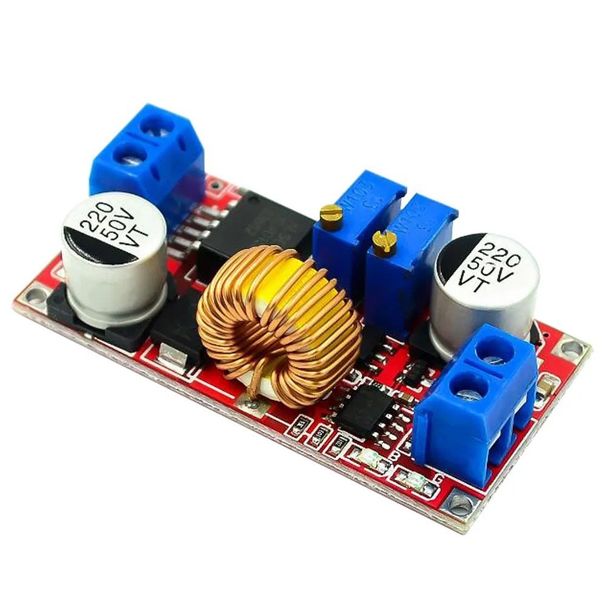
Vollansicht
Ähnliche Gegenstände
XL4015 Step-down-Leistungsmodul, Konstantstrom und Konstantspannung, Hochstrom-5A-Lithium-Ionen-Akku-Lade-LED-Treiber
9,45€13,70€
Farbe : XL4015 Buck-Stromversorgungsmodul

Menge :
Bericht
Urheberrechtsverletzungen einschließenKostenlos Standardversand. Siehe Einzelheiten
Geschätzt zwischen Sat, Nov 15 und Wed, Nov 19
Sie können das Produkt innerhalb von 30 Tagen nach Erhalt zurückgeben. Siehe Einzelheiten
Sorgenfrei einkaufen
Geld-Zurück-Garantie
Erhalten Sie den bestellten Artikel oder Ihr Geld zurück. Mehr erfahren
Über diesen Artikel
Quelle: Hange selection flagship department store
Der Verkäufer übernimmt die volle Verantwortung für dieses Angebot.Artikelnummer: 29702349
Artikelspezifikationen
Artikelbeschreibung vom Verkäufer
High current 5A constant current constant voltage LED driver, lithium ion battery charging, power module
5A constant voltage and constant current module
When using this product, the input and output of the module should not be together, which will cause the board's high-power current sampling resistor to be bypassed, so that the module cannot adjust the output current, and it is easy to burn the power chip on the module when connected to the load.
This module is simple to use and powerful!!! One module has 3 major functions to meet your needs for most occasions!!!
Module Highlights:
1. High power, high efficiency, 5A, low ripple;
2. Three in one:
(1) It is used as an ordinary step-down module with over-current protection capability.
(2) As a charger for lithium batteries, batteries, nickel-cadmium nickel-metal hydride batteries (battery packs) with various voltage values, it is used for solar panels, wind turbines, etc.;
(3) Used as a high-power LED constant current driver module;
3. With two modes of constant voltage and constant current, there is an indicator light indicating which mode the module is currently in;
4. When used as a lithium battery charger, the float voltage and charging current can be set, and there is an indicator light finger.
Indicates whether it is charging or fully charged.
5. Protection function of limited viewership, even if the output short circuit will not burn the module.
Module parameters
Input voltage: 4-38V
Output voltage: 1.25-36 V continuously adjustable
Output current: adjustable, maximum 5A
Output power: up to 75W
Working temperature: -40~ + 85 degrees
Operating frequency: 180KHz
Conversion efficiency: up to 96%
Short circuit protection: Yes (limit current 8A)
Over-temperature protection: Yes (automatically turn off the output after over-temperature)
Input reverse connection protection: none, (if necessary, please input a high current diode in series)
Installation method: 4 3mm screws
Wiring method: terminal or solder terminal, V-IN is input, V-OUT is output
Module size: length 51.2mm width 26.2mm height 15mm
Weight: 23g
Scope of application
1. Use as an ordinary step-down module with overcurrent protection capability
How to use:
(1) Adjust the constant voltage potentiometer to make the output voltage reach the voltage value you want
(2) Measure the output short-circuit current with the 10A current gear of the multimeter (just connect the two watch pens directly to the output terminal), and adjust the constant current potentiometer to make the output current reach the predetermined overcurrent protection value. (For example, if the current value displayed by the multimeter is 4A, then the maximum current can only reach 4A when you use the module. When the current reaches 4A, the red constant voltage constant current indicator light will be on, otherwise the indicator light will be off)
Note: When used in this state, due to the current sampling resistor of 0.05 ohms at the output, there will be a voltage drop of 0 to 0.3V after connecting the load, which is normal! This voltage drop is not pulled down by your load, but down to the sampling resistor.
2. Use as a battery charger
Modules without constant current function cannot be used to charge the battery. Due to the large pressure difference between the depleted battery and the charger, the charging current is too large, causing battery damage. Therefore, the battery should be charged with constant current at the beginning, and when the charging reaches a certain level, it will automatically switch back to constant voltage charging.
How to use:
(1) Determine the float voltage and charging current of the battery you need to recharge; (if the lithium battery parameter is 3.7V/2200mAh, then the float voltage is 4.2V, and the maximum charging current is 1C, that is, 2200mA)
(2) Under no-load conditions, the multimeter measures the output voltage and adjusts the constant voltage potentiometer to make the output voltage reach the floating charge voltage; (if charging a 3.7V lithium battery, adjust the output voltage to 4.2V)
(3) Measure the output short-circuit current with the 10A current gear of the multimeter (directly connect the two watch pens to the output terminal), and adjust the constant current potentiometer to make the output current reach the predetermined charging current value;
(4) The charging lamp current defaults to 0.1 times the charging current; (the battery current gradually decreases during the charging process, gradually changing from constant current charging to constant voltage charging. If the charging current is set to 1A, then when the charging current is less than 0.1A, the blue light is off and the green light is on. At this time, the battery is fully charged.)
(5) Connect the battery and charge it.
(Steps 1, 2, 3, and 4 are: the input terminal is connected to the power supply, and the output terminal is no-load without the battery)
3. Used as a high-power LED constant current driver module
(1) Determine the operating current and maximum operating voltage you need to drive the LED.
(2) Under no-load conditions, the multimeter measures the output voltage and adjusts the constant voltage potentiometer to achieve the highest operating voltage of the LED.
(3) Use the multimeter 10A current range to measure the output short-circuit current, and adjust the constant current potentiometer to make the output current reach the predetermined LED operating current.
(4) Connect the LED and test the machine.
(Steps 1, 2, and 3 are: the input is connected to the power supply, and the output is no-load without LED lights.)
Note: When this module is used in excess of 3A and 35W, please strengthen the heat dissipation!!!
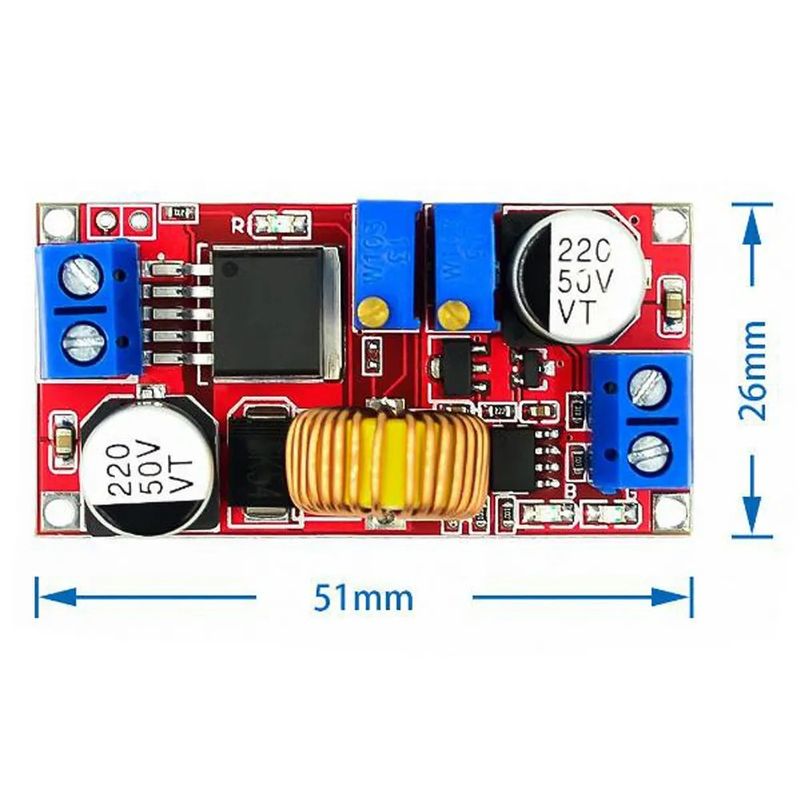
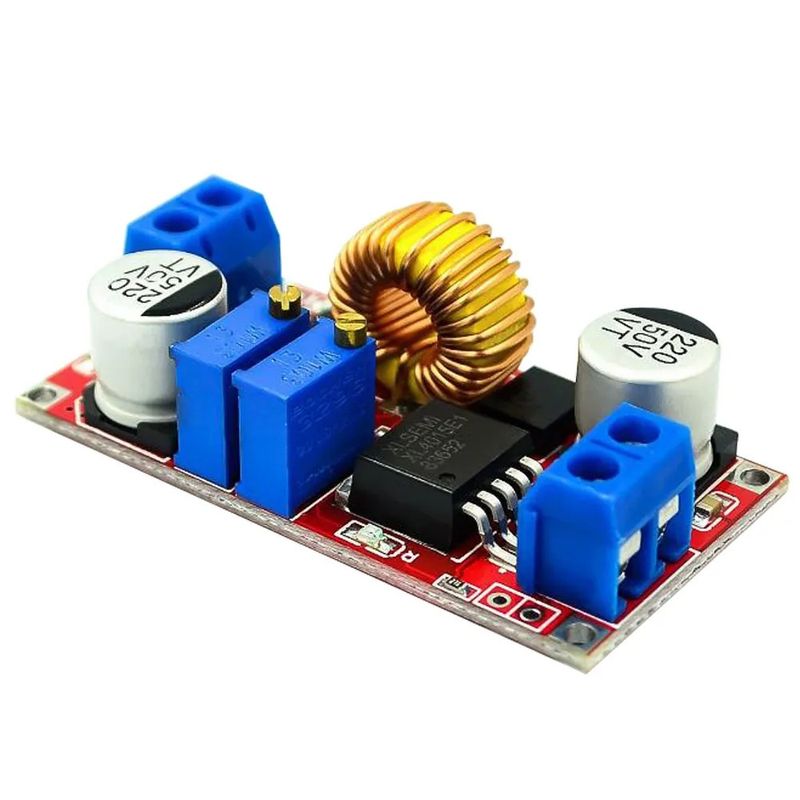

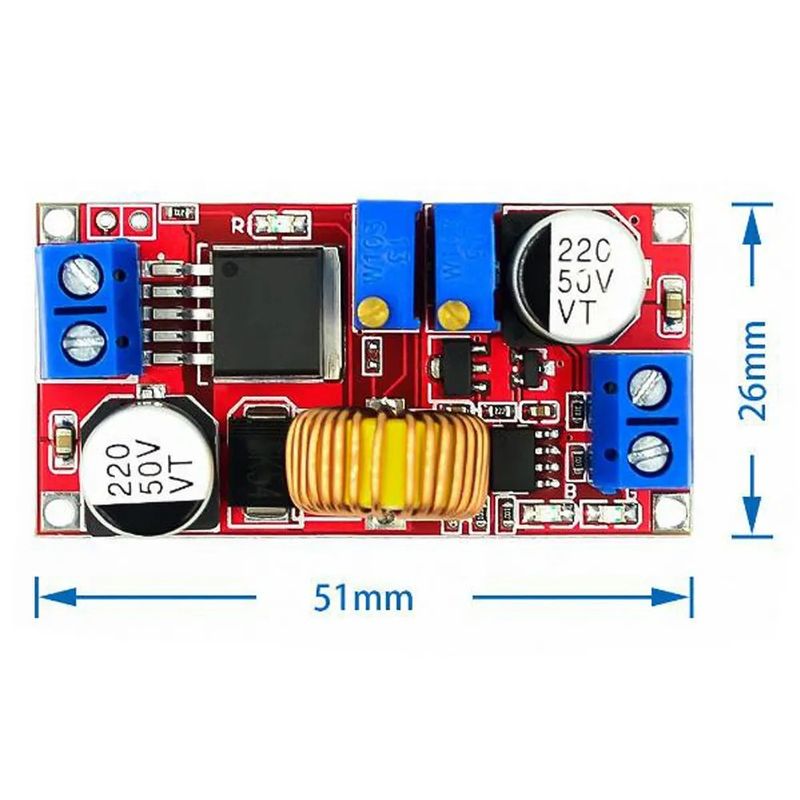





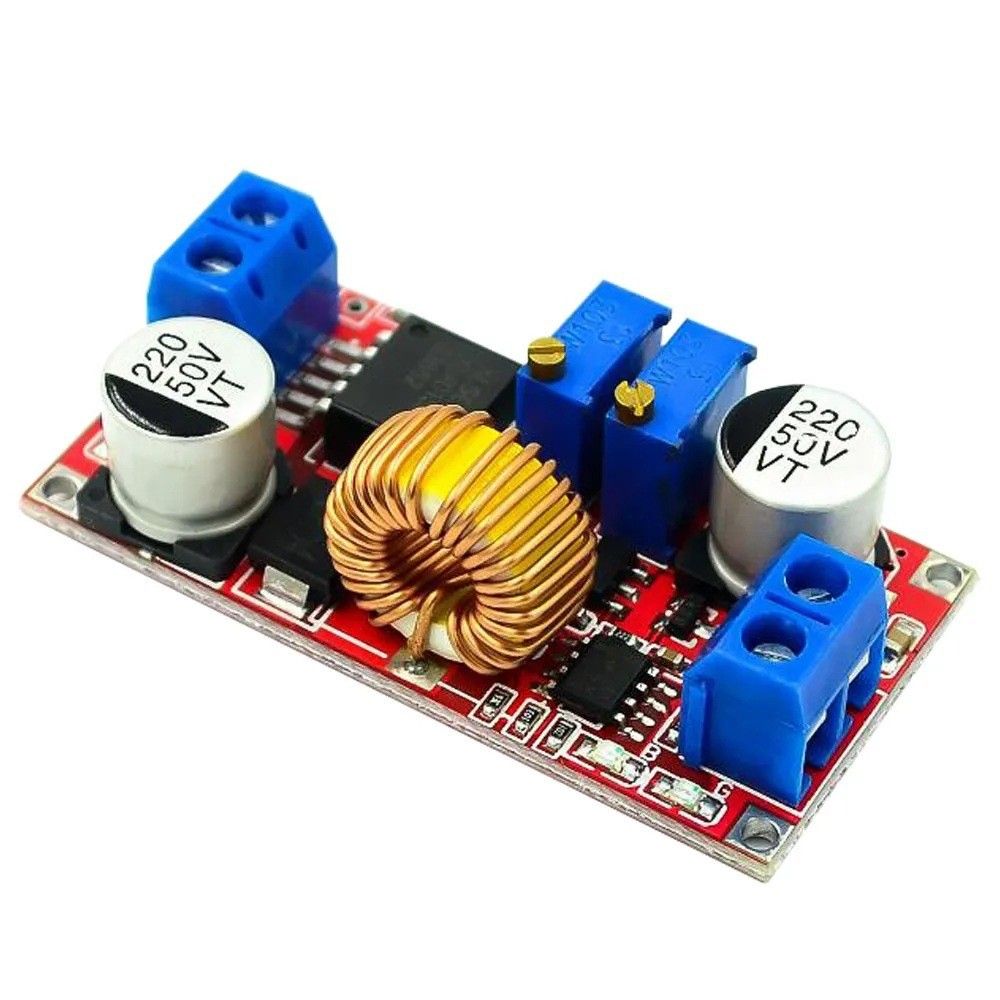

 4.4 von 5 basierend auf 7,646 bewertungen
4.4 von 5 basierend auf 7,646 bewertungen